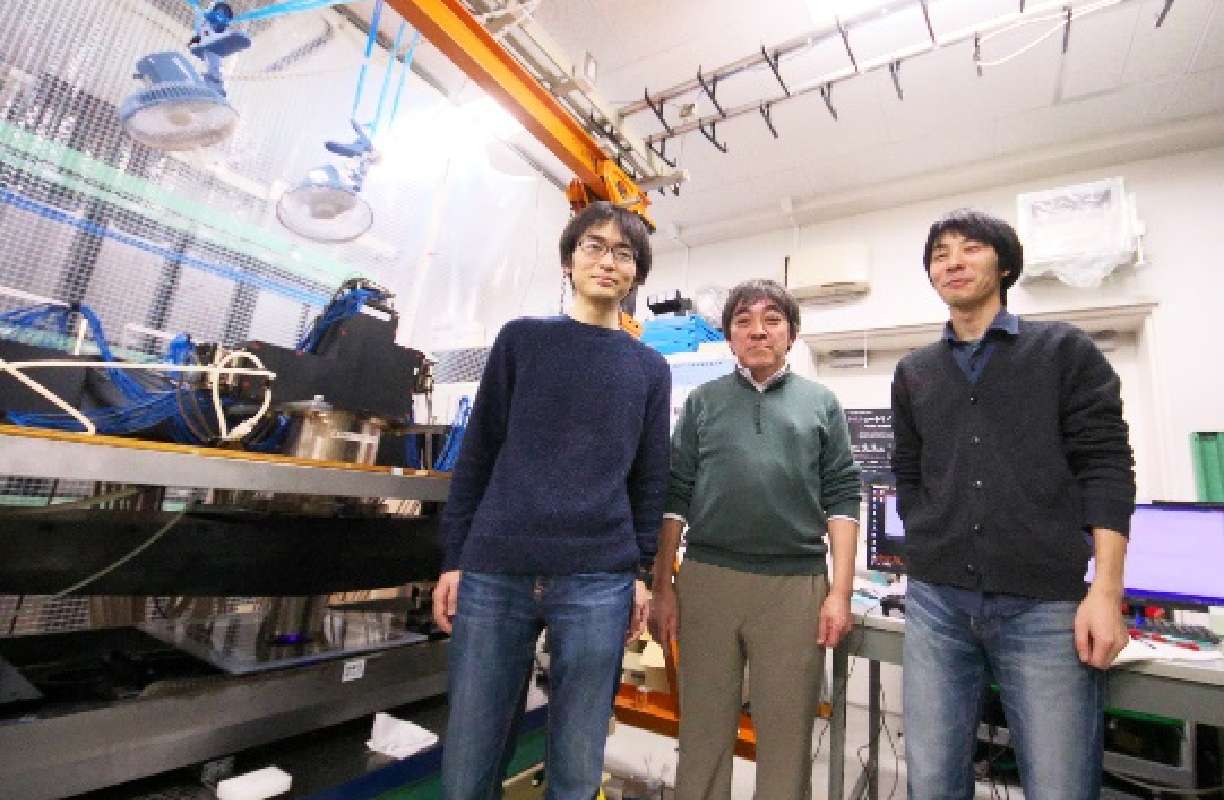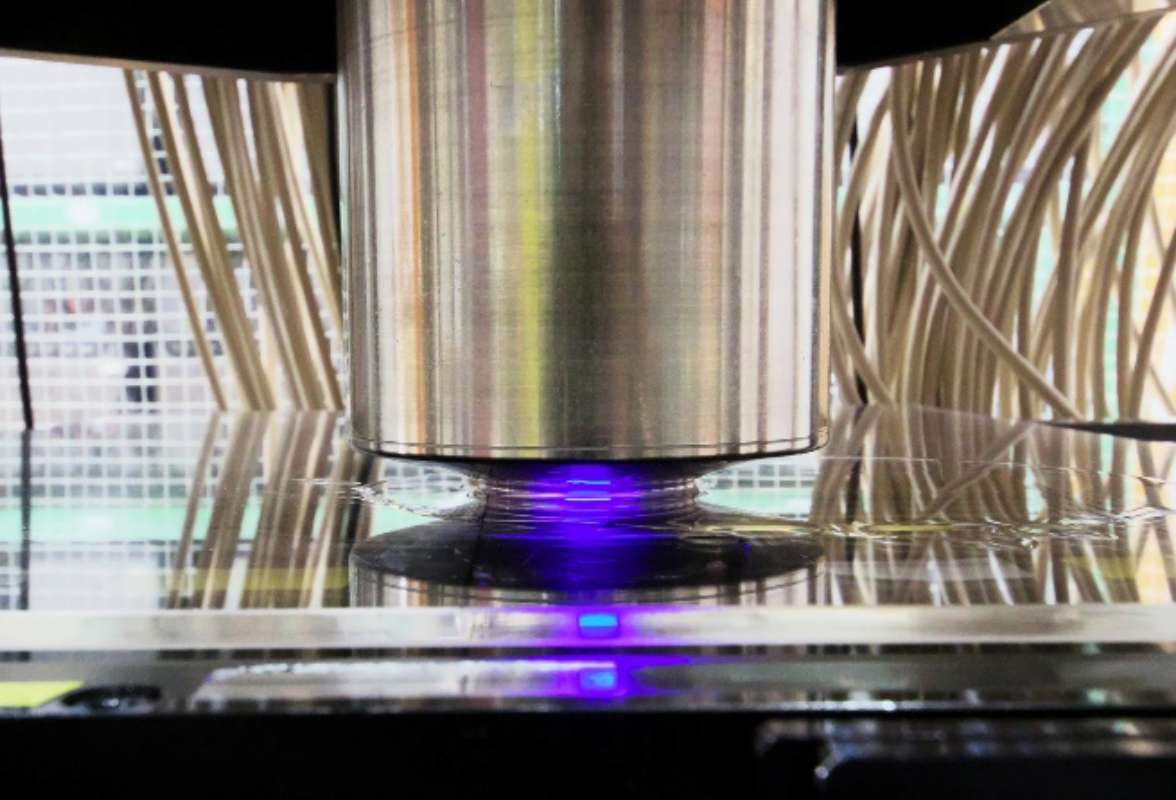Research
Research Group
Interview at Nakamura Laboratory
Seethrough Stones!?
The Hottest Technology: Muon Radiography*
—Stories about ScanPyramids—


The ScanPyramids project is now receiving attention from all over the world. You may be one of those excited by news that the interior of the pyramids, which has been shrouded in mystery for thousands of years, is coming to light.
This has become possible only with the development of technology to detect the tracks of cosmic-ray muons, which is in progress at Nakamura Laboratory. Now Professor Nakamura and specially appointed Assistant Professor Dr. Morishima will tell us about their extraordinary technological development and their experiences in Egypt.
-Why did you consider using the original muon detector (nuclear emulsion film) for scanning inside a pyramid?
Morishima:Luis Alvarez (who received the Nobel Prize in Physics in 1968) scanned Khafre's Pyramid in 1967 and reported no new findings or rooms. I thought, however, that, given the chance, I would like to verify the results using nuclear emulsion films, which are ideally suited to such measurements.
Nakamura:It just so happened that an international scientific research project called ScanPyramids was launched (in October 2015), and we ended up playing a central role in the survey.
-Considering where the pyramids are located, I imagine you had adventures like those of Indiana Jones.
Morishima:We encountered a flock of bats, we had strong winds, some of us were so absorbed in the mission that we became sick with dehydration, and much more. However, the real challenges were finding a place to develop nuclear emulsion films, finding the clean water needed for the development, making sure the films were not exposed to X-rays during baggage checks at the airport, and other such mundane things.
Detection of muon tracks


-Did you develop the films in the field and then read and analyze the data in the Nakamura laboratory?
Morishima:Nuclear emulsion films are sensitive to heat. So, considering the risk during transport, we developed the films in the field but read and analyzed the data using the automated hyper-track selector (HTS).
-Did you also make the nuclear emulsion films?
Morishima:Yes. We placed an emulsion on a transparent sheet to form an emulsion layer, which became a film once it solidified. Then we measured and analyzed the tracks of muons recorded on the emulsion layer. The emulsion was very important.
Nakamura:Morishima and his colleagues are trying to make films more suitable for radiography. They particularly want to extend the life span of films under high-temperature conditions because sometimes the films are used where the temperature reaches nearly 40 oC.
Morishima:Currently the life span of the films is about one month at 30 oC and three months at 26 oC. Ideally, they should last for a year at 40 oC.
Equipment for preparing emulsion for nuclear emulsion films



-Are three-dimensional tracks of muons passing through this thin film detected precisely?
Morishima:Yes. We are also developing the HTS and are continuously making improvements. The analysis speed of the current HTS is 100 times faster than that of the previous one and 10,000 times faster than that of the HTS I first saw when I was a student.
Nakamura:We expect to make further progress in the future.
-Lastly, could you tell me what you’re planning for the future and what you would like to tell younger people?
Morishima:We’d like to use three-dimensional projections like tomography, especially for scanning large objects such as Mt. Fuji. And one more thing, we’d like to look for any undiscovered particles since the target area in radiography is becoming wider and wider. Having such goals is important in our analysis.
Nakamura:I’d like to say to young people that they should try anything they are interested in. Don’t put a limit on yourself because you never know what will prove useful in this area of research.
Morishima:That’s true. You shouldn’t get too focused on one thing but should make decisions based on whether or not you are interested in it. Also, I hope people outside of particle physics will take more interest in radiography. This technology is useful in a wide variety of areas.
*Muon: A muon is an elementary particle with high penetrating power. Most of the charged particles in cosmic rays reaching Earth are muons. Muons were first discovered by Carl Anderson and Seth Neddermeyer in 1937. Although muons are highly capable of penetrating materials, some of them are absorbed during penetration depending on the material density and the penetration distance. As a result, the distribution of observed muons reflects the internal structure of an object. Using nuclear emulsion films, it is possible to obtain transmission images of an object just like those obtained by X-ray photography.
*Radiography: An imaging technique using radiation to obtain transmission images of the internal structure or the state of an object. Cosmic rays are high-energy radiation that travels across space.
Text extracted from “IMaSS NEWS Vol. 02” Special Issue, IMaSS Publicity Committee (Matsuda and Konishi)






